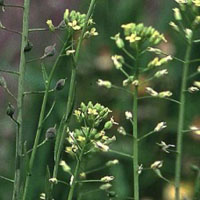Low-input cultivation of camelina (Camelina sativa (L.) Crantz) in a Mediterranean semi-arid environment

Accepted: 30 December 2020
HTML: 176
All claims expressed in this article are solely those of the authors and do not necessarily represent those of their affiliated organizations, or those of the publisher, the editors and the reviewers. Any product that may be evaluated in this article or claim that may be made by its manufacturer is not guaranteed or endorsed by the publisher.
Highlights
- Camelina showed high adaptability to conservation agriculture practices.
- Seed yield of 1.9 t ha–1 was obtained under reduced tillage and low fertilisation rate.
- High inputs (fertilisation and tillage) determined a 12-d longer crop cycle.
- α-linolenic, erucic and eicosenoic acids were affected by input levels.
The cultivation of oil crops for biofuel production has often been accused of not being environmentally sustainable due to the high inputs needed. To explore the effect of reduced input on productive and qualitative traits of camelina (Camelina sativa (L.) Crantz), a trial was carried out over a two-year period. This study analysed two different levels of input: a low input treatment (shallow non-inversion tillage and low fertilisation rate) and a high input treatment (deeper tillage and high fertilisation rate). Camelina was positively, even though to a limited extent, affected by high input treatment as highlighted by the increase in seed yield (from 1.8 to 2.0 t ha–1), crop residues (from 4.8 to 5.2 t ha–1), seed protein content (from 26.5 to 28.9%), seed oil content (from 41.5 to 43.4%) and oil yield (from 0.75 to 0.88 t ha–1). So, from a sustainable point of view, we must consider negligible the effect of high input and satisfactory the performances of camelina in the low input regime. Low input management resulted in satisfactory yields in terms of both quantity and quality, results which were not very different from high input, indicating promising potential for conservation agriculture practices in camelina in a semi-arid environment.
How to Cite
PAGEPress has chosen to apply the Creative Commons Attribution NonCommercial 4.0 International License (CC BY-NC 4.0) to all manuscripts to be published.

 https://doi.org/10.4081/ija.2021.1728
https://doi.org/10.4081/ija.2021.1728







